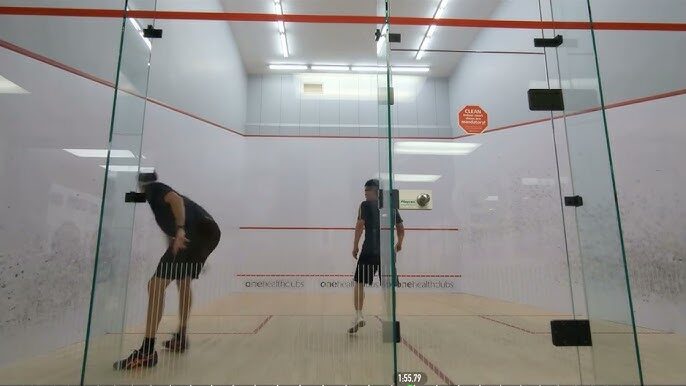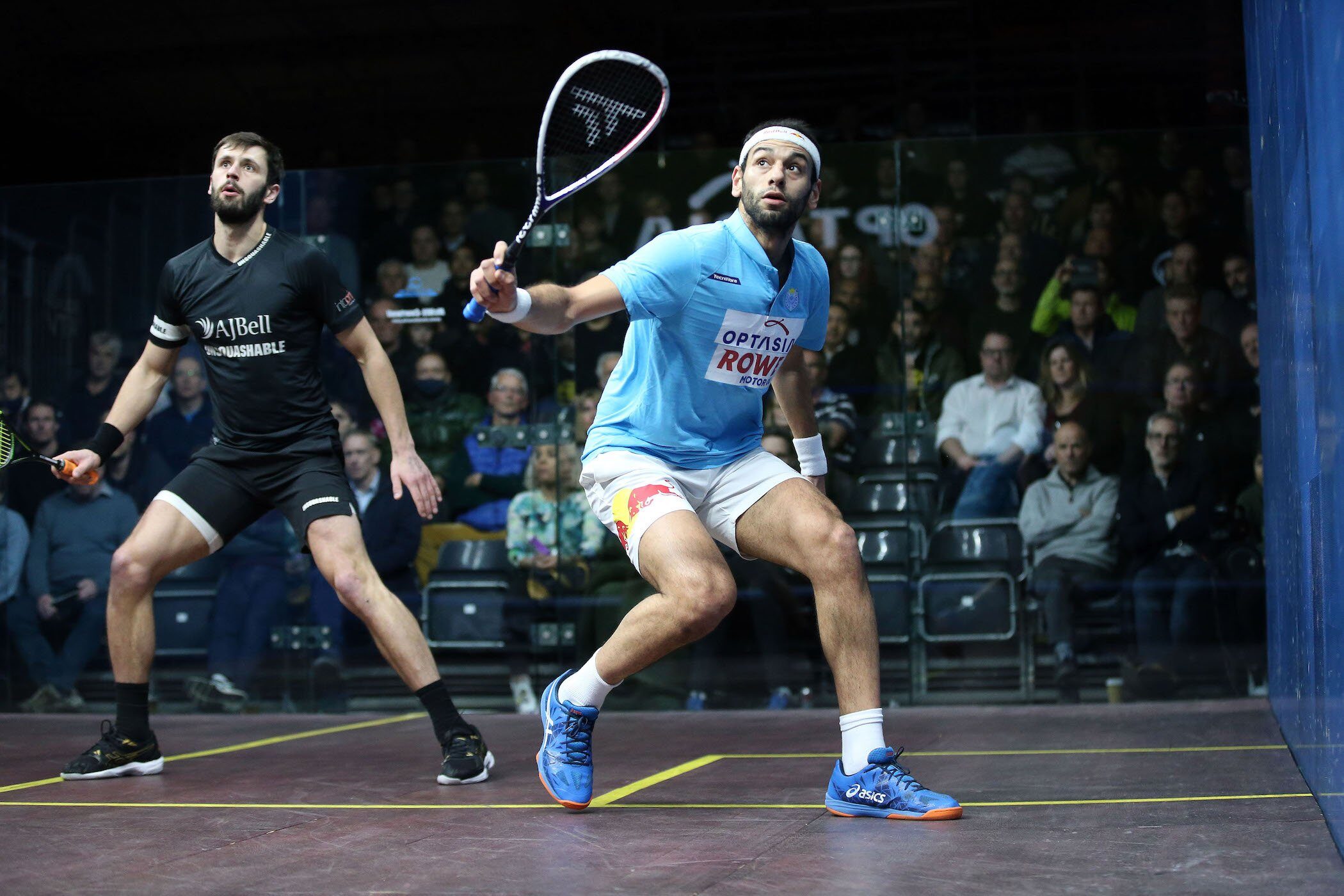Squash is one of the most physically demanding sports in the world, requiring players to exhibit exceptional fitness, quick reflexes, strategic thinking, and mental toughness. The world’s top squash players not only rely on their natural talent but also adhere to rigorous and well-structured training routines that help them achieve success at the highest level. In this blog, we’ll dive into the key elements of training routines followed by top squash players like Mohamed ElShorbagy, Nour El Sherbini, and others.
1. The Role of Physical Fitness in Squash
Squash is a fast-paced sport that demands peak physical condition. Top players focus on a well-rounded fitness regimen that includes cardiovascular endurance, agility, strength, and flexibility.
Cardiovascular Fitness
Squash requires intense bursts of speed and stamina. Elite players, such as Mohamed ElShorbagy, incorporate interval training to enhance their cardiovascular fitness. These intense workouts simulate the stop-and-start nature of a match, improving both endurance and explosive speed.
Strength and Power
Strength is essential for quick reflexes, hitting powerful shots, and maintaining control on the court. Players like Nick Matthew, a former world champion, integrate weightlifting and bodyweight exercises into their routine. This combination helps them build the explosive strength needed to perform at the highest level.
Flexibility and Agility
Flexibility and agility are paramount for quick movements and injury prevention. Squash players engage in dynamic stretching, yoga, and Pilates to enhance flexibility. For example, World No. 1 player Nour El Sherbini attributes her flexibility training to keeping her body in top condition while avoiding injuries.
2. Core Training Routines of Top Squash Players
The core of any squash player’s success lies in their training regimen. Players spend hours on and off the court to perfect their skills, improve physical fitness, and sharpen their minds. Let’s take a look at some of the key elements of top players’ training routines.
Strength Training
Squash players, such as Ramy Ashour, follow a targeted strength training program that focuses on building core, upper body, and lower body strength. These exercises help squash players hit powerful shots, move quickly, and reduce injury risk.
Cardiovascular Conditioning
Cardio workouts for squash players include interval training, sprints, and long-distance runs. These exercises help players develop the stamina necessary to play fast-paced matches that can last up to an hour or more. The goal is to stay energetic and alert throughout the game.
Flexibility Work
Flexibility exercises such as yoga and Pilates are vital for injury prevention and overall mobility. These routines enhance a player’s range of motion and prevent strains, ensuring that they maintain peak physical condition during long matches.
3. On-Court Training: Technical and Tactical Drills
While fitness is crucial, technical skills are just as important in squash. Top players, like Mohamed ElShorbagy, focus on perfecting their footwork, shot accuracy, and match strategies.
Footwork Drills
Footwork is at the heart of squash. Top players like Ali Farag prioritize footwork drills to improve speed and positioning on the court. These drills help players stay one step ahead of their opponents and respond swiftly to challenging shots.
Rally Practice
Rally practice is essential for developing consistency and stamina. World No. 3 player Paul Coll uses rally drills to build endurance, focusing on maintaining long rallies while refining shot placement. The goal is to reduce errors under pressure and sustain energy during the match.
Shot Accuracy and Strategy
Top players like Nour El Sherbini and Mohamed ElShorbagy emphasize technical drills, including shot accuracy exercises, drop shots, and volley practice. These drills help them refine the precision and consistency of their shots, allowing them to control the pace of the game and outsmart their opponents tactically.
Game Simulations
Professional players also simulate match conditions in their training sessions. They create scenarios that mimic the intensity and pressure of live games, allowing them to test their decision-making and focus under challenging conditions.
4. Mental Preparation: Developing Focus and Resilience
Squash isn’t just about physical fitness—it’s also about mental toughness. Top players dedicate significant time to mental preparation to stay focused, calm, and strategic during matches.
Visualization
Visualization is one of the most powerful mental tools. Players like Laura Massaro use visualization techniques to mentally rehearse their shots, anticipate game scenarios, and increase confidence before matches.
Meditation and Mindfulness
Top players also use mindfulness and meditation techniques to manage stress and stay composed during critical moments. Mindfulness training helps players like Nour El Sherbini stay present during matches, ensuring they stay focused and resilient.
Resilience Building
Resilience is vital, especially when matches get intense. Players like James Willstrop work on building mental resilience through exercises that help them overcome setbacks, stay positive, and maintain high performance even under pressure.
5. Recovery and Injury Prevention
Rest and recovery are just as important as training when it comes to avoiding burnout and injuries. Players like Mohamed ElShorbagy take recovery seriously to ensure their bodies are in top condition for each match.
Active Recovery
Active recovery, including light jogging, swimming, or cycling, helps reduce muscle tension while keeping blood flowing. This ensures that the body recovers faster after intense training sessions.
Stretching and Foam Rolling
Stretching and foam rolling help players release tight muscles and improve flexibility. Many top players, like Nick Matthew, make this part of their daily routine to prevent injuries.
Massage and Ice Baths
Massage therapy and ice baths are essential for reducing muscle soreness and speeding up recovery after a match or intense workout. Players like Ramy Ashour and others incorporate these recovery methods into their routine to stay in top form.
6. Nutrition and Hydration for Peak Performance
What you put into your body is just as important as how you train. Nutrition and hydration play a critical role in the performance of elite squash players.
Diet for Energy and Recovery
Top players follow a diet that’s rich in lean proteins, complex carbohydrates, and healthy fats. For instance, Nour El Sherbini emphasizes balanced meals to fuel her body during training sessions and recovery phases.
Hydration Strategies
Proper hydration is key to maintaining energy levels during matches. Players like Mohamed ElShorbagy ensure they stay hydrated throughout the day, especially before and after intense training sessions, to prevent fatigue and dehydration.
7. Insights from Top Players
The best way to understand training routines is to hear from the players themselves. Here’s a look at the routines of a few top squash professionals:
- Mohamed ElShorbagy: ElShorbagy combines high-intensity interval training (HIIT) with technical drills to sharpen his skills. His training focuses on explosive power and stamina, and he incorporates mindfulness techniques to stay calm under pressure.
- Nour El Sherbini: El Sherbini’s routine includes intense on-court drills, flexibility training, and mental conditioning. She’s known for her precise and strategic play, honed through consistent practice.
- Ramy Ashour: Known for his flair on the court, Ashour’s training routine includes strength work and agility drills, focusing on improving his speed and balance while maintaining explosive power.
8. How Amateurs Can Implement These Training Routines
While the routines of top players are intense and tailored to their needs, amateurs can still implement parts of these routines to improve their game. Here are a few tips:
- Start with Cardio: Incorporate interval training and sprints into your workouts to improve stamina.
- Footwork Drills: Use ladder drills and cone exercises to improve movement on the court.
- Flexibility: Include yoga and stretching in your routine to enhance mobility and prevent injuries.
- Mental Training: Practice mindfulness and visualization techniques to stay focused during your matches.
The training routines of top squash players are meticulously designed to build physical fitness, technical skills, mental toughness, and resilience. By incorporating elements from the routines of legends like Mohamed ElShorbagy, Nour El Sherbini, and others, you can elevate your game and compete at a higher level. Whether you’re an aspiring professional or a recreational player, consistency, dedication, and smart training are key to becoming the best.
Have you tried any of these training routines in your own practice? Share your experiences in the comments below or ask any questions you may have about training for squash. For more squash tips and training advice, be sure to subscribe!




